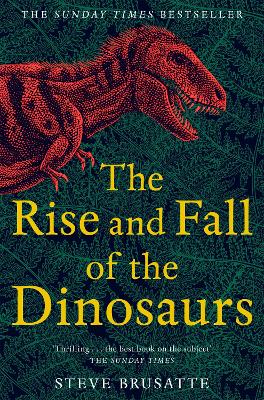

In this stunning narrative spanning more than 200 million years, Steve Brusatte, a young American paleontologist who has emerged as one of the foremost stars of the field-discovering ten new species and leading groundbreaking scientific studies and fieldwork-masterfully tells the complete, surprising, and new history of the dinosaurs, drawing on cutting-edge science to dramatically bring to life their lost world and illuminate their enigmatic origins, spectacular flourishing, astonishing diversity, cataclysmic extinction, and startling living legacy.

Today their extraordinary true story remains one of our planet's great mysteries. 66 million years ago, the Earth's most fearsome and spectacular creatures vanished. That’s a whole lot smarter than the dinosaurs of stereotype.A sweeping and groundbreaking history of the age of dinosaurs, from one of our finest young scientists. Based on these numbers, we can say that Rex was roughly as smart as a chimp and more intelligent than dogs and cats. By comparison, our EQ is about 7.5, dolphins come in around 4.0 to 4.5, chimps at about 2.2 to 2.5, dogs and cats are in the 1.0 to 1.2 range, and mice and rats languish around 0.5. rex had an EQ in the range of 2.0 to 2.4. It’s basically a measure of the relative size of the brain compared to the size of the body (because, after all, bigger animals have bigger brains simply because of their body size: elephants have bigger brains than us but are not more intelligent). It’s called the encephalization quotient (EQ). However, there is a straightforward measure that scientists use to roughly compare the intelligence of different animals. Now, measuring intelligence is riddled with uncertainties, even for humans: just think of all of the IQ tests, exams, SAT scores, and other things that we use to try to assess how smart people are.

It’s also a relatively large brain, at least for a dinosaur, which hints that T. It didn’t look anything like our brain but was more of a long tube with a slight kink at its back, surrounded by an extensive network of sinuses.

Scans tell us quite a bit about our patient.


 0 kommentar(er)
0 kommentar(er)
